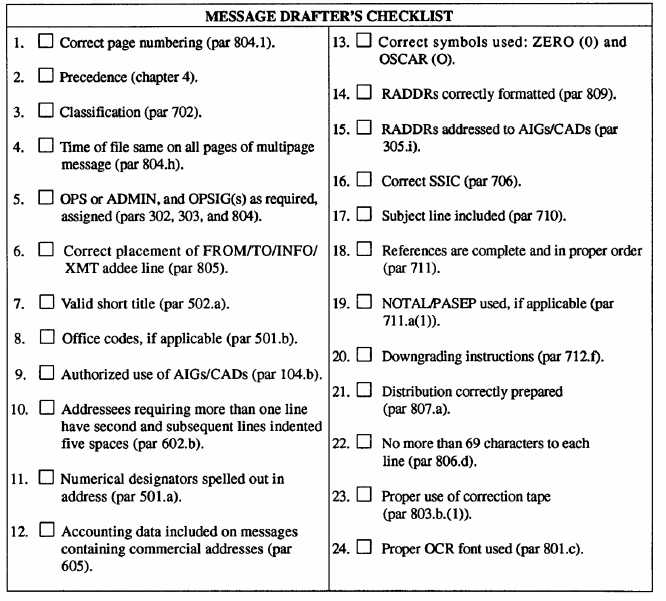require you to use a computer to prepare message
traffic.
The most common messages you will see are
operational messages and administrative messages.
Operational messages are those directing or affecting
the actual use or movement of forces, ships, troops
and aircraft; issuing reports affecting the safety of
lives, ships, forces, or areas; and message traffic
relating to exercises conducted for fleet training and
readiness. Administrative messages pertain to
matters of such a nature or urgency including
reports, perishable information, matters associated
with operations and readiness, and urgent matters
requiring considerable coordination or that must be
brought to the early attention of seniors. Most
messages originating in the chaplain’s office will be
administrative.
You must also be familiar with the United
States Navy Plain Language Address Directory, USN
PLAD 1. This is part of the Message Address
Directory
that
contains
authorized
message
addresses. Figure 6-5 shows a message drafter’s
checklist you can use when preparing a message for
release. (The paragraph references refer to the
location of these guidelines in the official publication.)
Communication means many things to many
people. Letters, memorandums, reports, pamphlets, and
booklets may come to mind to some. But others may
think of modern communication devices such as the
Figure 6-5.—Message drafter’s checklist.
6-18



